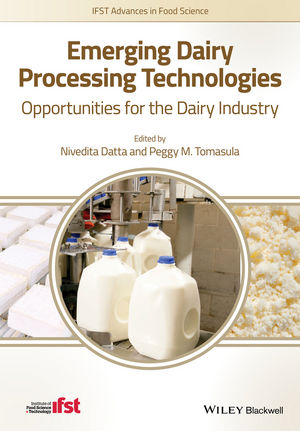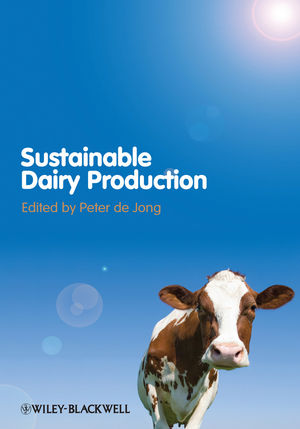How to solve the dairy packaging puzzle
Dairy processors seeking to leverage the most potent packaging for their unique circumstances must sort through an expanding array of alternatives.








Selecting the optimal packaging for their specific products and operating infrastructures can be an onerous endeavor for dairy processors. Companies seeking to maximize product quality, operating efficiencies and revenues must sort through a growing plethora of rigid and flexible options that consist of varying materials and elements.
Astute operators need to consider such factors as food safety, labeling, sustainability, sanitation, clarity, supply availability, functionality and shelf stability when making decisions, analysts say, and ensure they are choosing options that are cost-effective and compatible with existing technologies.
Choosing between rigid and flexible designs also is necessary. Rigid selections include tin cans, glass bottles, cartons and more. Flexible options include pouches, bags and other lightweight alternatives that processors often seal with heat or pressure; they often feature closures that enable consumers to save and reuse products.
It is crucial that processors recognize the requirements for protecting products during distribution and merchandising and meeting shelf-life objectives when choosing a rigid or flexible alternative, says Christi Emmenegger, vice president of strategic marketing for BW Packaging Systems, a Clayton, Mo.-based supplier of rigid and flexible selections. That includes determining the materials and barrier properties that are appropriate for each item.
“Rigid packaging is a popular choice if your product requires superior protection,” she says. “However, not all product requires a rigid structure, and there are some flexible packaging solutions that offer strong product protection, too.”
In addition, dairy processors should identify the rigid and flexible alternatives that will enhance operational efficiencies by, for instance, enabling faster line speeds and greater machine uptime, says Darin Gregg, market director – dairy, for Winpak Ltd., a Winnipeg, Manitoba-based manufacturer of packaging machines and materials.
The selections also must align with the aesthetics, shelf-space and sustainability needs of merchandisers and consumers if they are to generate maximum payback, he says.
“Packaging must deliver a wholesome and safe product to the end user, whether it be a retail, foodservice or institutional application,” Gregg notes.
Emphasize the appearance
Shelf presentation and product differentiation, meanwhile, are further factors that processors should review when scrutinizing options, says Christian Uebele, product market manager, thermoformers for Multivac Inc., a Kansas City, Mo.-based supplier of packaging technologies and materials. That includes focusing on designs that can best spotlight brand identity and clearly communicate product claims and attributes, he says.
Yet it is important that operators not overload the packaging with excessive messaging, states Mintel Group Ltd., a global market research firm, in its June 2019 “Beverage Packaging Trends US” report.
“While formulations may be getting cleaner, package design is getting messier,” Mintel notes. “Touting ‘better for you’ has become a baseline requirement, yet it can run the risk of creating crowded labels or seeding confusion about the legitimacy of different claims. Indeed, consumers may become numb to such claims or unable to differentiate between authentic ones.”
Because shelf life also is often a pivotal factor in a product’s appeal, packaging that shelters the contents from oxygen can be especially advantageous, Uebele says. Effective alternatives include vacuum packages and packaging that contains an inert gas such as nitrogen, he says.
“Vacuum packaging helps remove oxygen from the product to protect it from microorganisms,” he says. “However, after sealing the package without oxygen and then exposing it to atmospheric pressure, delicate products such as shredded cheese can be crushed into a hard ball.”
Flushing packages with inert gas after vacuuming enables the contents to remain at atmospheric pressure to protect against damage, Uebele explains.
Seek assistance from suppliers
To better manage the packaging selection process, operators should work in concert with the vendors that can provide insights on the most appropriate applications for each dairy product, says AJ Chivell, technical services manager for LMI Packaging, a Pleasant Prairie, Wis.-based manufacturer of lids and pressure-sensitive labels.
“Have a clear idea of what you want, and hold the supplier to that vision,” he says. “It will better ensure a high-quality product. The goal is to operate efficiently while always keeping the end customer in mind.”
Indeed, involving suppliers early in the planning and purchasing proceedings will enable processors to garner insights on the newer technologies and materials, “which can change what is possible,” says Michael Sachau, market development director for TC Transcontinental, a Montreal-based flexible packaging supplier.
“It is important to alleviate the processor challenge of achieving greater functionality and performance while dealing with cost pressures,” he says.
Line operators within processing facilities also can provide valuable input, Chivell says, as “they understand the subtle differences in packaging and know how to make any necessary adjustments to equipment” to accommodate different options.
In addition, such parties might be able to better pinpoint the newer packaging technologies that will improve their operations and the level of operator experience necessary for running the machinery, he says.
“Knowing such information can help guide decisions on qualifying options and the resources that will be necessary,” Chivell says.
Line speed and output objectives are further variables to consider when selecting packaging for specific products, says Tim Johnson, regional sales manager for ProMach Inc., a Covington, Ky.-based supplier of packaging technologies and materials.
“There are many options available when it comes to speed, and with these different options come different costs,” he says.
Keep pace with changing consumer concerns
Along with designs that enhance processing efficiencies, processors seeking greater payback from packaging should incorporate elements that respond to evolving shopper interests, analysts note. That includes using more environmentally friendly materials.
“Indeed, shoppers will increasingly look to manufacturers, retailers and brands for easy and affordable sustainability solutions,” Mintel states in its June 2019 “Food Packaging Trends US” report. “One limitation to consumer sustainability efforts is that they think it’s someone else’s responsibility. Consumers are likely to attribute sustainability efforts as benefiting the planet, yet do not recognize a direct personal benefit. While consumers may voice green or ethical sentiments, they are often too lazy, cash-strapped or short of time to turn belief into action.”
As a result, consumers want suppliers and merchandisers “to do the good work for them. The expectation is on brands, and food manufacturers will need to pick up the mantle,” Mintel notes.
The market research firm adds that younger consumers are the least likely to identify personal responsibility for sustainability efforts, “leaving the onus on brands to take the lead through not only sustainable packaging and practices, but also educational programs and partnerships that can help consumers to take a more proactive, personal role.”
Yet meeting sustainability goals often is a challenge for processors, and it may also require them to reduce energy usage and carbon dioxide emissions through eco-friendly practices that mitigate the effects of climate change, adds Coley Mitchell, general manager – USA for Synerlink, a Paris-based filling and packaging machine manufacturer and unit of BW Packaging Systems.
“It’s recommended to choose packaging solutions that offer the ideal blend of quality, speed, efficiency, flexibility and sustainability that will best meet the needs of their business,” he says.
Improvements come with a price
Incorporating more sustainable features and other newer packaging elements, however, may necessitate alterations to the processing infrastructure, which can be burdensome. For instance, Gregg says that some processors “cannot easily recapitalize” to advanced packaging systems.
Updating equipment also might require adjustments to legacy dairy lines. Such lines often were built to support a narrow purpose — for example, the filling and capping of gallon jugs and the packing, cartoning or palletizing of the products, says Michael Collins, business development manager – dairy for Stow, Ohio-based Pneumatic Scale Angelus. The company is part of BW Packaging Systems, which supplies packaging machinery for wet and dry filling, capping, can seaming, labeling and centrifugation applications.
“Adapting to a new format requires all new machinery in a new space, or the complete dismantlement of old equipment with restructuring to install new equipment,” he says. “In either case, the investment is costly.”
Indeed, Sachau says packaging system implementation and operational issues can be arduous. Processors, for instance, must ensure that products can withstand abuse throughout the supply chain and that packages remain leakproof to guard against unwanted oxygen, he says.
“If you don’t have performance, you don’t have the ability to effectively sell your products,” Sachau says. “A lower-quality package and loss of shelf presence will lead to lower sales and lower brand equity.”
Efficiency-minded processors, meanwhile, typically find it vexing to run varying packaging styles on the same equipment, Johnson says.
“The greatest challenge for machine operators is constant changeover, as every changeover results in processing downtime,” he says. “Dedicated production lines for each application will pay for themselves if space is available in plants for the machinery.”
Leveraging more efficient technologies, however, such as electronic filling systems that are more precise when adding fluids to rigid packaging, can help mitigate operating expenses, Collins says.
“Processors also should consider incorporating new beverage lines that have one-third or one-half the output of legacy lines but which require less plant space and investment,” he says, adding that deploying a second processing line to run in tandem with an identical line can enable operators to increase output without extra personnel.
Line operators who receive professional training on handling the newer packaging technologies will further contribute to greater outputs, Uebele says.
“Processors cannot achieve their overall-equipment-effectiveness benchmarks without guidance on how to optimize machines or reduce errors,” he says. “The biggest challenge in an operation is obtaining the highest practical productivity quickly and then maintaining these levels.”
Such training will be increasingly important as suppliers launch additional packaging technologies and materials. Vendors, for instance, are continuing to develop new reclose options, Uebele says, which include Velcro-style locking members “that can handle granular contamination better than traditional zippers,” as well as zippers that create a moisture barrier when users reclose the locking members.
Stronger peel-and-reseal functionality and designs that support greater arrays of portion sizes also are becoming more prevalent, Sachau adds.
“These elements help the packaging and products fit changing consumer lifestyles, including the growing on-the-go snacking” trend, he says.
Recent BW Packaging System interviews with cheese producers also reveal high demand for equipment with superior hygienic designs that are easy to clean and change over and are intuitive to operate, Emmenegger says.
“The industry is not sitting on its laurels by just using the packaging technologies that have been with us for decades,” Uebele says. “Manufacturers are continually developing superior solutions.”
Looking for a reprint of this article?
From high-res PDFs to custom plaques, order your copy today!












